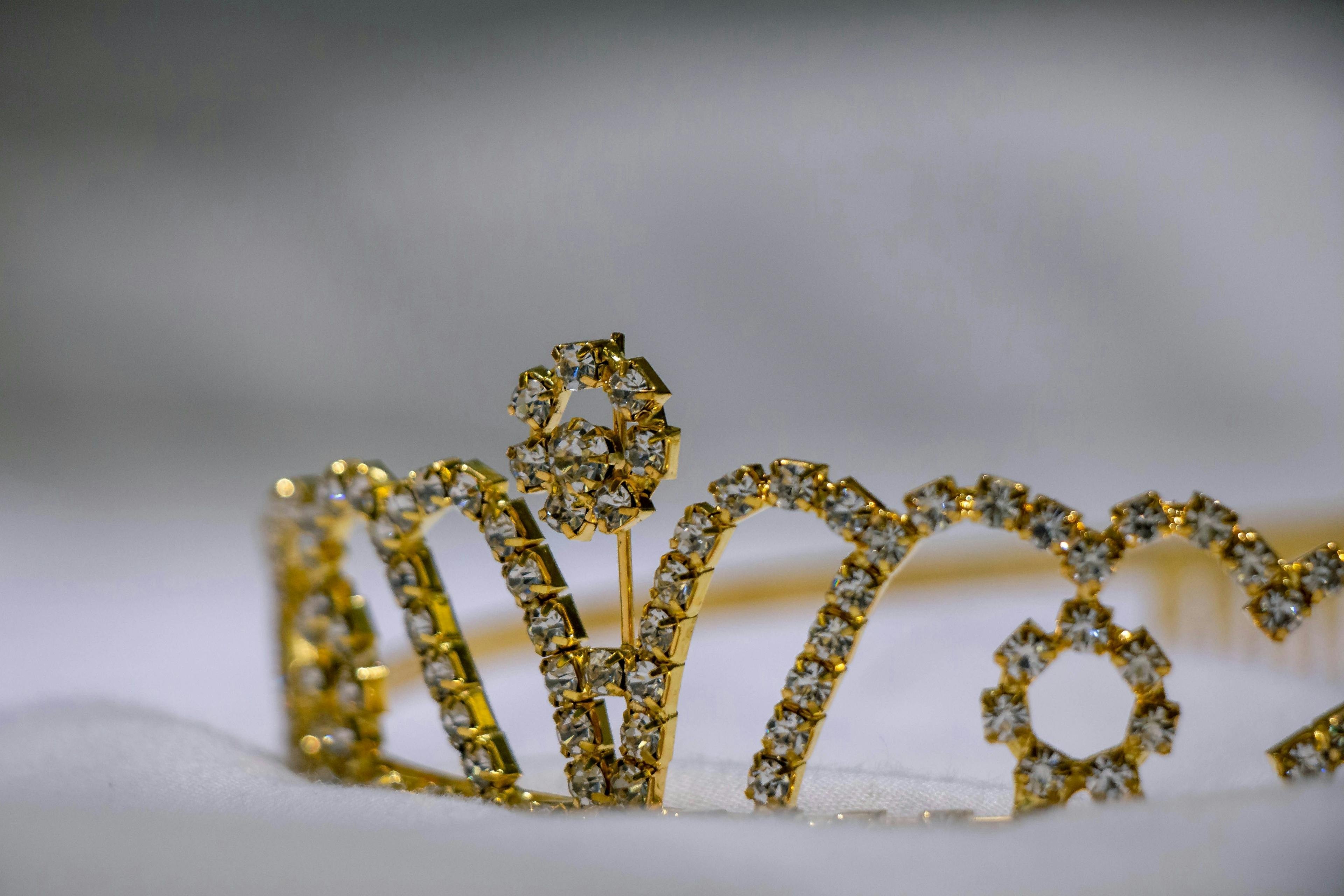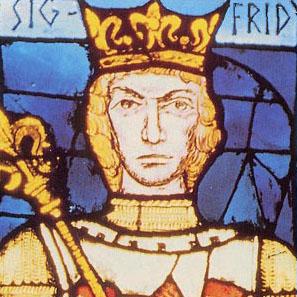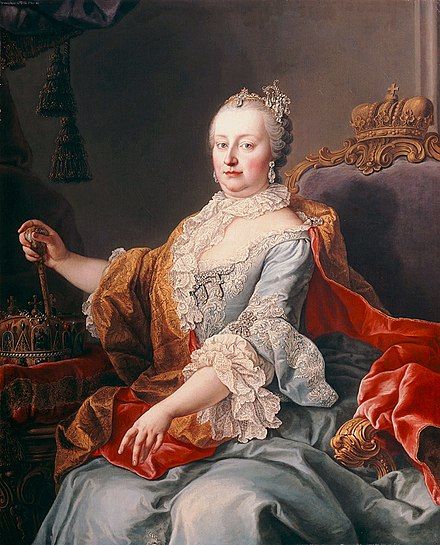
Luxembourg monarchy — history of the royal family
From Sigefroid to Grand Duke Henri, Luxembourg has witnessed the reign of numerous dynasties, with its rulers ascending from counts to dukes and grand dukes. Over 1000 years of history have unfolded, marked by a myriad of political, economic, and social fluctuations. In this article, we aim to provide a comprehensive overview, highlighting the most significant events in the history of the Luxembourg monarchy.
Currently Luxembourg is a constitutional monarchy and the only remaining sovereign Grand Duchy in the world. A constitutional monarchy is a political system that acknowledges a hereditary monarch as the head of state. Under this system of power succession, the Crown of the Grand Duchy passes from one member of the House of Nassau to another within the same family.
The founding of Luxembourg and the first count's house
Sigefroid is considered the founder of Luxembourg. His name first appears in historical records in 963 when he exchanged some lands he owned with the Saint-Maximin Abbey of Trier for a small, rugged terrain, a rocky promontory upon which stood a small fortress, likely erected during Roman times and known as "Lucilinburhuc," which literally translates to "small fortified castle."

It wasn't until his great-grandson Conrad I that the title "Count of Luxembourg" first appeared in a document dated 1083, which recorded the founding of the Benedictine Abbey of Munster.
The fortress of Lucilinburhuc became the focal point from which territorial consolidation occurred throughout the 11th, 12th, and 13th centuries. From Sigefroid onwards, eight counts succeeded within the same family lineage until the death of Conrad II in 1136. With Conrad II's passing, the first House of the Counts of Luxembourg came to an end.
The second count's house of Namur
Upon the death of Conrad II without a male heir, the Roman Emperor appointed Henry IV (known as Henry the Blind), Count of Namur, as the Count of Luxembourg. He was the son of Godfrey I of Namur and Ermesinde of Luxembourg, the daughter of Conrad I. Thus, the County of Luxembourg continued to be partly under the control of the House of Luxembourg, albeit through the female line.
No son — no crown
When Henry IV passed away without a male heir, his brother, Emperor Henry VI the Stern, granted Luxembourg to Otto I of Burgundy, who held the title from 1196 to 1197. Subsequently, Ermesinde, daughter of Henry IV the Blind, negotiated with Otto I for the return of the county and became the Duchess of Luxembourg from 1197 to 1247.
Luxembourg – Limburg house
In 1247, the title of count passed to Ermesinde's son, Henry V, known as Henry the Blondel, marking the beginning of the Luxembourg-Limburg House. Following Henry V, the title was held by his son Henry VI, and then by his grandson, Henry VII.
Roman Emperors
Under Count Henry VII, the counts of Luxembourg began their ascent to the highest echelons of power. In 1308, Henry was elected to occupy the throne of the Holy Roman Empire.
After Henry VII, he was succeeded by his son John the Blind, and then by his son Charles I, who was elected King of the Romans in 1346, assuming the name Charles IV. During his reign, in 1354, Charles elevated the County of Luxembourg to a duchy and transferred it to his half-brother Wenceslaus.

The Duchy of Luxembourg
Wenceslaus I served as the Duke of Luxembourg from 1353 to 1383. Upon his death, Wenceslaus II, also known as Wenceslaus the Drunkard, son of Charles I (Charles IV), reclaimed the County of Luxembourg. From Wenceslaus II onwards, the Dukes of Luxembourg successively mortgaged the duchy to certain prominent lords or princes, in exchange for a sum of money that they could repay to regain control of the duchy.
Following Wenceslaus II, Sigismund I took the reins, followed by Elizabeth of Luxembourg, and several more dukes. However, as the county was encumbered and they couldn't repay the debt, the duchy ultimately fell into the hands of the current mortgagee, Philip I, also known as Philip the Good.
Valois – Bourgogne House
The capture of Luxembourg by Philip the Good in 1443 integrated the Duchy of Luxembourg into a larger entity, the Burgundian State, and later the Low Countries. The Low Countries were not truly a state but rather a conglomerate of relatively autonomous principalities.

He was succeeded by his son, Charles III the Bold, who held the title from 1467 to 1477. Despite having three different wives, Charles III only had one daughter, Mary of Burgundy, who served as Duchess of Luxembourg from 1477 to 1482. However, upon her death, the Duchy of Luxembourg was inherited by her son, Philip the Handsome, and thus became part of the Habsburg Empire.
Habsburg – Bourbon House
Following Philip II the Handsome was his son Charles IV of Ghent (Charles V). In 1555-1556, Charles V abdicated and divided his lands, with his brother Ferdinand I inheriting the Imperial Crown and the Austrian lands, while his son, Philip II, inherited Spain and the Netherlands.
Philip II held the title of Duke of Luxembourg from 1555 to 1598, followed by Philip III the Catholic from 1598 to 1621, Isabella of Spain from 1598 to 1621, Albert of Austria from 1598 to 1621, Philip IV the Great from 1621 to 1665, and Charles V the Bewitched (Charles II of Spain) from 1665 to 1700.
During the reign of Charles V the Bewitched, from 1678 to 1683, Louis XIV's troops occupied large parts of Luxembourg, capturing the capital in 1684. The city was fortified extensively by the French engineer Vauban, who had directed the siege operations.
French territories
Luxembourg remained under French control briefly, from 1684 to 1697, until the Treaty of Ryswick obliged Louis XIV to relinquish Luxembourg and return it to Charles II of Spain in 1698.
Charles II of Spain, the Bewitched, died without an heir due to congenital degeneration, leading to the War of the Spanish Succession. Philip V the Valiant inherited the Kingdom of Spain according to Charles II's wishes but faced the claims of the Habsburgs of Austria, to whom he ceded the Netherlands under the Treaty of Utrecht. At the end of the War of the Spanish Succession, the Spanish Netherlands, including Luxembourg, passed into the hands of the Austrian Habsburgs in 1714, with Emperor Charles VI taking possession of them.
House of Habsburg – Lorraine
Following the death of Charles VI, his daughter Marie-Thérèse inherited the Duchy of Luxembourg. Her son, Joseph II, succeeded her in 1780 and continued his mother's work, which foreshadowed the reforms of the French Revolution.

Upon Marie-Thérèse's death, her second son, Leopold, ascended to the ducal throne from 1747 to 1792, followed by his son, Francis, who inherited the duchy in 1792 and held it until 1795. The Habsburg reign came to an end with the arrival of revolutionary troops in Luxembourg in 1795. The Duchy of Luxembourg was annexed to France as the "Department of Forests." This period brought profound changes to Luxembourg and shaped its development in the 19th century.
Orange – Nassau dynasty and the Grand Duchy of Luxembourg nowadays
Following Napoleon's defeat in 1813 and his abdication in 1814, the Luxembourgers desired the return of the Habsburgs. However, the Congress of Vienna in 1815 had different plans.
Creation of the Grand Duchy
Following Napoleon's defeat in 1813 and his abdication in 1814, the Luxembourgers desired the return of the Habsburgs. However, the Congress of Vienna in 1815 had different plans. With the primary goal of containing France within its borders, the major European powers decided to create a large Kingdom of the Netherlands, entrusted to the Orange-Nassau dynasty.
William I of Orange-Nassau thus expanded Holland with the former Austrian Netherlands. The Duchy of Luxembourg was established as an independent state, elevated to the rank of Grand Duchy, and personally granted to the King of the Netherlands "to be possessed in perpetuity by him and his successors with full property and sovereignty." Consequently, the Kings of the Netherlands also became Grand Dukes of Luxembourg.
William I did not treat Luxembourg as an independent state but as a province of his kingdom. By ignoring the political, economic, and religious particularities of the southern provinces, William angered the Belgians, who rebelled in August 1830. Soon after, the Luxembourgers joined the Belgians in their revolt, reproaching the King-Grand Duke for his blatant lack of interest in Luxembourg. By rebelling against William, the Luxembourgers hoped to escape Dutch domination and see their particularities respected in the future.
Independence gained in 1839
In 1839, William finally signed the Treaty of London, sanctioning a division between Limburg and Luxembourg and declaring the independence of the Grand Duchy, although it ceded almost half of its territory to the newly created Belgium. Luxembourg remained under the dominion of the King of the Netherlands and was far from being fully independent, but this treaty in 1839 marked a turning point in its history.
Duchy of Williams II and III
William II succeeded his father in 1840 and granted a special constitution to the Grand Duchy. His reign was short but rich in reforms. He established the administrative infrastructure upon which the Grand Duchy would base its development until becoming a genuine state and ratified Luxembourg's entry into the Zollverein (customs union with Prussia) in 1842. In 1848, Luxembourg adopted a very liberal constitution, which limited royal prerogatives.
Upon William II's death in 1849, he was succeeded by his son, William III, who reigned until 1890. As King and Grand Duke, William III only left a daughter (Queen Wilhelmina of the Netherlands), so the grand ducal succession fell to another branch of the Nassau family. The grand ducal crown passed to the only male heir of the House of Nassau, Duke Adolphe of Nassau.
House of Nassau — current dynasty in 2024
Following Adolphe's death in 1905, he was succeeded by his son, William IV. William IV fathered six daughters and wanted to allow women to ascend to the throne and transmit dynastic rights. Therefore, on July 10, 1907, succession rules were modified to permit this.
Upon his death, Marie Adélaïde then inherited the duchy and became Grand Duchess of Luxembourg in 1912, followed by her sister Charlotte in 1919, who reigned until 1964. After her came her son Grand Duke Jean, who held the title until the year 2000 when he was succeeded by his son Henri, who is the current Grand Duke.

Frequently Asked Questions (FAQ)
Who are the members of the current Luxembourg royal family?
What are some key events or milestones in the history of the Luxembourg monarchy?
How did Luxembourg gain its status as a Grand Duchy?
Source: fr.wikipedia.org, es.wikipedia.org, es.wikipedia.org, fr.wikipedia.org, monarchie.lu, fr.wikipedia.org, fr.wikipedia.org, fr.wikipedia.org
We took photos from these sources: Albert Jarod Ibay on Unsplash, Wikipedia, monarchie.lu